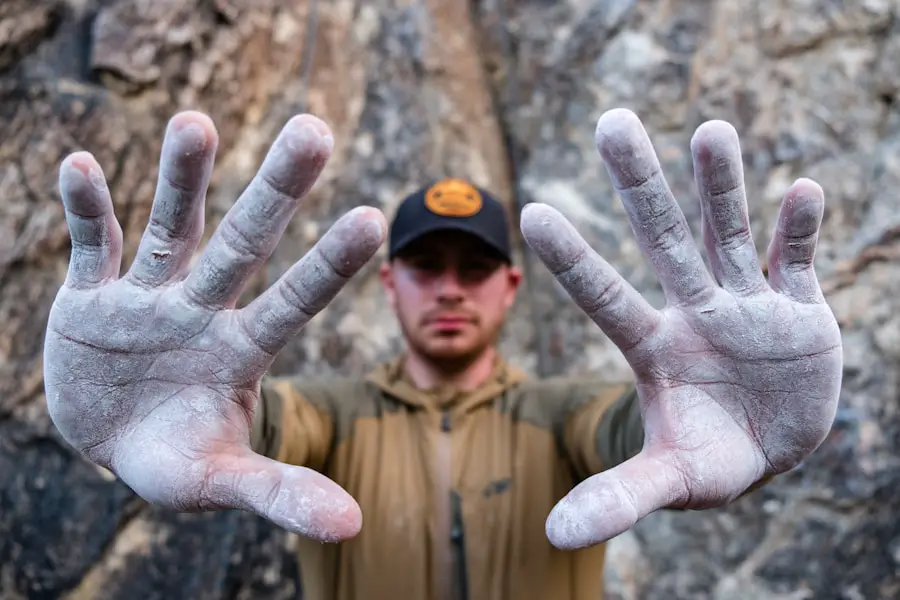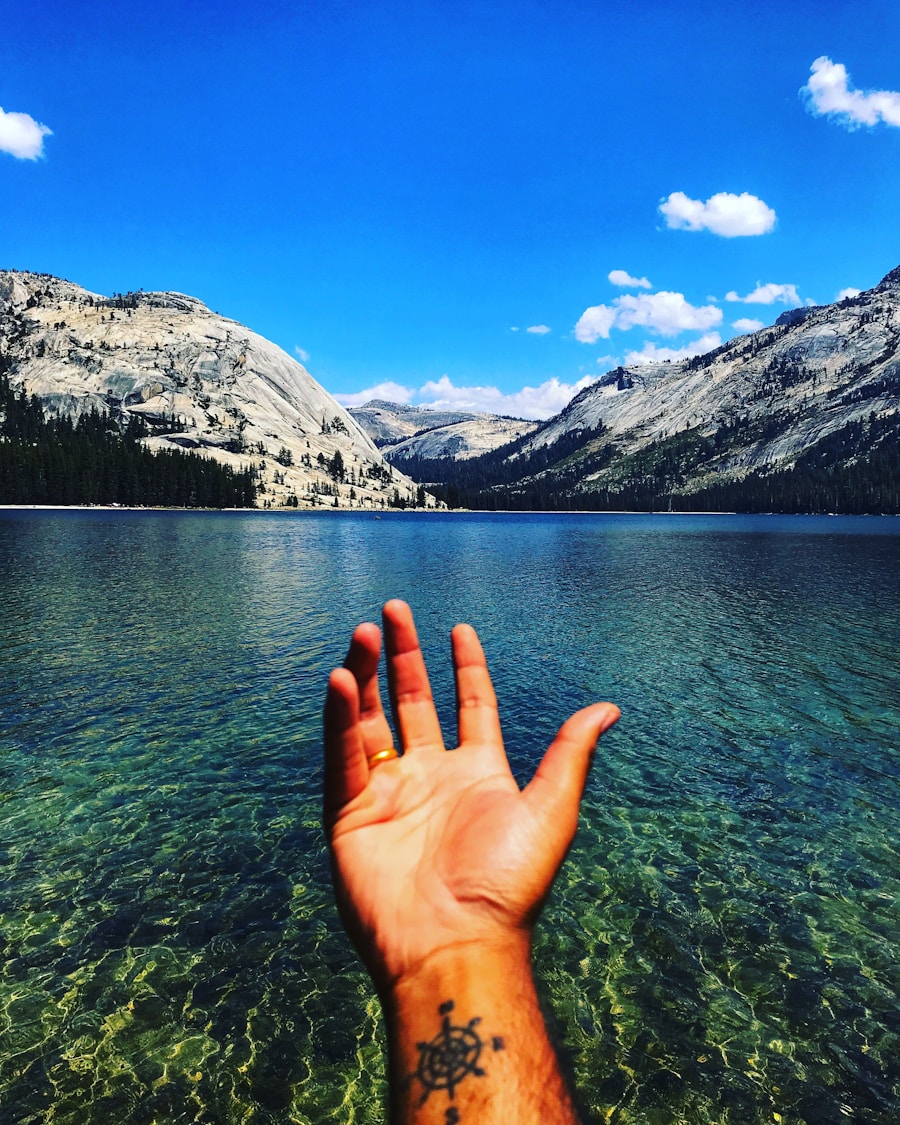Hiking is a beloved outdoor activity that allows individuals to connect with nature while engaging in physical exercise. However, many hikers experience a common yet often overlooked issue: hand swelling. This phenomenon can occur during or after a hike, leading to discomfort and potentially impacting the overall hiking experience.
Understanding the intricacies of hand swelling is essential for both novice and seasoned hikers, as it can affect not only their enjoyment of the trail but also their safety and performance. Hand swelling, medically known as peripheral edema, can manifest in various ways, from mild puffiness to significant enlargement of the fingers and wrists. This condition can be particularly concerning for hikers who rely on their hands for balance, navigation, and the use of trekking poles.
As hikers ascend or descend trails, the combination of physical exertion, changes in altitude, and environmental factors can contribute to this swelling. By delving into the causes, effects, and management strategies for hand swelling during hiking, individuals can better prepare themselves for their outdoor adventures.
Key Takeaways
- Hand swelling during hiking is a common issue that can be caused by various factors such as altitude, temperature, and repetitive motion.
- Causes of hand swelling during hiking include increased blood flow to the hands, dehydration, and wearing tight gear or clothing.
- Hand swelling can affect hiking performance by reducing grip strength, causing discomfort, and increasing the risk of injury.
- Prevention and management of hand swelling during hiking can be achieved through proper hydration, wearing appropriate gear, and taking regular breaks to rest and elevate the hands.
- Proper gear and clothing, such as well-fitted gloves and moisture-wicking fabrics, are important for preventing hand swelling during hiking and maintaining comfort.
Causes of Hand Swelling During Hiking
Several factors contribute to hand swelling during hiking, with one of the primary culprits being fluid retention. As hikers engage in strenuous activity, their bodies may respond by redistributing fluids to accommodate increased blood flow and muscle activity. This physiological response can lead to an accumulation of fluid in the extremities, particularly in the hands.
Additionally, the gravitational pull experienced during hiking can exacerbate this fluid retention, especially when traversing steep inclines or declines. Another significant factor is temperature regulation. Hiking often involves exposure to varying temperatures, which can cause blood vessels to dilate or constrict.
When temperatures rise, blood vessels expand to help dissipate heat, leading to increased blood flow to the skin’s surface. This process can result in swelling as fluids seep into surrounding tissues. Conversely, cold temperatures can cause blood vessels to constrict, potentially leading to reduced circulation and a different type of swelling due to decreased blood flow.
Furthermore, wearing tight-fitting gloves or gear can restrict circulation and contribute to swelling in the hands.
Effects of Hand Swelling on Hiking Performance

The impact of hand swelling on hiking performance can be significant and multifaceted. For starters, swollen hands can lead to decreased grip strength, making it challenging for hikers to hold onto trekking poles or navigate rocky terrain. This loss of dexterity can increase the risk of slips and falls, particularly on uneven surfaces where balance is crucial.
Hikers may find themselves struggling to maintain control over their equipment, which can lead to frustration and diminished enjoyment of the hike. Moreover, hand swelling can also affect a hiker’s ability to perform essential tasks such as adjusting gear, opening food containers, or using navigation tools like maps or GPS devices. The discomfort associated with swollen hands may distract hikers from their surroundings and detract from their overall experience.
In some cases, severe swelling may even necessitate a premature end to a hike, forcing individuals to cut short their adventure due to discomfort or impaired functionality.
Prevention and Management of Hand Swelling During Hiking
| Prevention and Management of Hand Swelling During Hiking | |
|---|---|
| Hydration | Drink at least 8-10 glasses of water per day |
| Hand Exercises | Perform hand and finger exercises to improve circulation |
| Compression Gloves | Wear compression gloves to reduce swelling |
| Elevation | Raise your hands above heart level to reduce swelling |
| Rest | Take breaks and rest your hands during long hikes |
Preventing hand swelling during hiking involves a combination of proactive measures and effective management strategies. One of the most effective ways to mitigate swelling is through proper warm-up exercises before hitting the trail. Engaging in gentle stretching and mobility exercises for the hands and wrists can promote circulation and prepare the muscles for physical activity.
Additionally, incorporating regular breaks during hikes allows for rest and recovery, giving the body a chance to redistribute fluids more evenly. Another key strategy is to monitor hand positioning while hiking. Keeping the hands elevated when possible can help reduce fluid accumulation.
Hikers should also consider adjusting their grip on trekking poles or other equipment to avoid excessive pressure on the hands. If swelling does occur during a hike, applying cold compresses or ice packs during breaks can provide relief and reduce inflammation. Elevating the hands above heart level during rest periods can further assist in minimizing swelling.
Importance of Proper Gear and Clothing for Hand Swelling Prevention
The choice of gear and clothing plays a crucial role in preventing hand swelling during hiking excursions. Selecting gloves that fit properly is essential; overly tight gloves can restrict circulation and contribute to fluid retention in the hands. Hikers should opt for gloves made from breathable materials that allow for moisture-wicking while providing adequate insulation against temperature fluctuations.
In addition to gloves, the overall fit of hiking gear is important. Wearing clothing that allows for freedom of movement without being overly constrictive can help maintain proper circulation throughout the body. Hikers should also pay attention to their footwear; ill-fitting shoes can lead to compensatory movements that may affect overall body mechanics and contribute to swelling in the extremities.
By investing in high-quality gear that prioritizes comfort and functionality, hikers can significantly reduce their risk of experiencing hand swelling.
Understanding the Role of Hydration in Hand Swelling

Hydration is a critical factor in managing hand swelling during hiking. When hikers become dehydrated, their bodies may respond by retaining fluids as a survival mechanism, leading to increased swelling in the extremities. Conversely, maintaining proper hydration levels helps regulate blood volume and circulation, reducing the likelihood of fluid retention.
Hikers should aim to drink water consistently throughout their trek rather than waiting until they feel thirsty. A general guideline is to consume about half a liter (17 ounces) of water per hour during moderate activity; however, this amount may vary based on individual needs and environmental conditions such as temperature and humidity. Electrolyte balance is also essential; incorporating electrolyte-rich beverages or snacks can help replenish lost minerals through sweat and support overall hydration levels.
Recognizing When Hand Swelling Requires Medical Attention
While mild hand swelling during hiking is often manageable with self-care strategies, there are instances when it may signal a more serious underlying issue that requires medical attention. Hikers should be vigilant for signs of severe swelling accompanied by other symptoms such as pain, redness, warmth, or numbness in the hands or fingers. These symptoms could indicate conditions such as deep vein thrombosis (DVT) or an allergic reaction.
Additionally, if hand swelling persists long after completing a hike or is accompanied by systemic symptoms like fever or chills, it is crucial to seek medical evaluation promptly. Early intervention can prevent complications and ensure that any underlying health issues are addressed effectively. Hikers should not hesitate to consult healthcare professionals if they have concerns about persistent or severe hand swelling.
Tips for Recovery and Rehabilitation After Experiencing Hand Swelling During Hiking
Recovery from hand swelling after a hiking trip involves several strategies aimed at reducing inflammation and restoring normal function. Resting the affected hands is paramount; allowing time for recovery helps prevent further irritation and promotes healing. Gentle stretching exercises can aid in regaining flexibility and strength once the initial swelling subsides.
Applying cold therapy immediately after experiencing hand swelling can be beneficial; ice packs wrapped in a cloth should be applied for 15-20 minutes at a time to reduce inflammation effectively. Compression garments may also provide support during recovery by promoting circulation and minimizing fluid retention. Incorporating anti-inflammatory foods into one’s diet post-hike can further assist in recovery.
Foods rich in omega-3 fatty acids, such as salmon or walnuts, along with fruits and vegetables high in antioxidants like berries and leafy greens, can help combat inflammation at a cellular level. By understanding the causes and effects of hand swelling during hiking and implementing effective prevention strategies, hikers can enhance their outdoor experiences while minimizing discomfort associated with this common issue.
If you’re wondering why hands swell when hiking, it could be due to a variety of factors such as dehydration, altitude, or overuse. One way to combat swelling during outdoor activities is to stay properly hydrated and take breaks to rest and elevate your hands. For more tips on staying comfortable and prepared during your hiking adventures, check out this article on the best solar charger for backpacking. This guide will help you stay connected and powered up while exploring the great outdoors.
Love travel? Join Our Facebook Community For More Tips.
FAQs
What causes hands to swell when hiking?
When hiking, the body’s natural response to physical exertion is to increase blood flow to the muscles. This can cause the hands to swell as the blood vessels dilate and fluid accumulates in the tissues.
How can hiking contribute to hand swelling?
Hiking involves repetitive motion and prolonged use of the hands and arms, which can lead to increased blood flow and fluid retention in the hands, causing them to swell.
Are there any medical conditions that can cause hands to swell during hiking?
Certain medical conditions, such as arthritis, carpal tunnel syndrome, or lymphedema, can contribute to hand swelling during hiking. It’s important to consult a healthcare professional if you have concerns about swelling during physical activity.
What can be done to prevent or reduce hand swelling while hiking?
Staying hydrated, taking regular breaks to rest and elevate the hands, and wearing properly fitting gloves can help prevent or reduce hand swelling while hiking. Additionally, maintaining good overall physical fitness and gradually increasing hiking intensity can also help minimize swelling.
